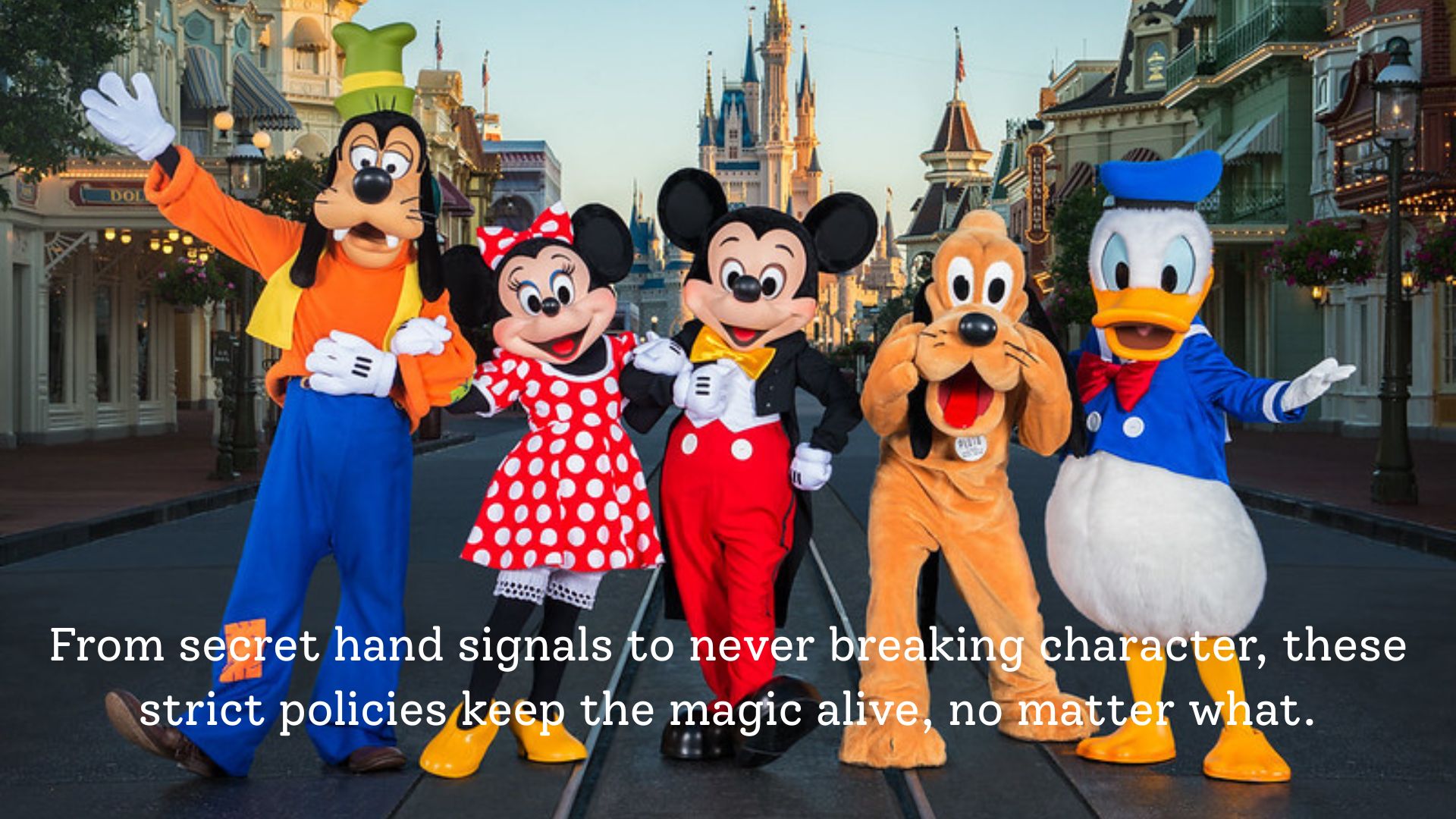
At Disney, you can be fired for slouching. Or for taking off your head. Or for using the word “no.” It sounds absurd, until you realize that every smile, gesture, and trash pickup is part of a meticulously directed performance. Behind the castles and churros is a backstage world run on rules. Not guidelines. Not suggestions. Rules. And to work here, you don’t just need enthusiasm. You need total commitment to the illusion that Mickey is real, the rain is charming, and no one ever has a bad day.
Some rules are charming. Others are so oddly specific, they sound like urban legends (but they’re not). Employees are fingerprinted, forbidden from saying “I don’t know,” and trained to move, speak, and even sweat in character. The goal? To keep you believing, from the moment you step through the gates to the moment you forget where the real world went. These are 22 of the strangest, but absolutely true, rules Disney enforces on its park employees. And once you know them, you’ll never see the magic the same way again.
1. The Disney Point: A Two-Fingered Gesture with a Smoky Backstory

At Disney parks, cast members aren’t allowed to point with just one finger. Instead, they must direct guests using two fingers or an open hand, which is now famously known as “The Disney Point.” On the surface, it’s a gesture of politeness; in many cultures, pointing with a single finger is considered rude or aggressive. Disney, which hosts guests from around the world, wants everyone to feel at home. But this rule goes beyond etiquette. Cast members are trained to use fluid, almost theatrical motions, so even the simple act of giving directions feels like part of the show. It’s not “go that way,” it’s more like “right this way to your fairy tale ending.”
But here’s the twist: this rule may have originated from Walt Disney’s smoking habit. Walt was rarely photographed without a cigarette in hand, typically held between his index and middle fingers. In later years, Disney PR teams airbrushed the cigarettes out, leaving images where Walt appeared to be pointing with two fingers. Whether by accident or homage, the gesture stuck and became gospel in cast member training. Now, every Disneyland employee unwittingly mimics the ghost of a cigarette-smoking Walt. A sweet, surreal reminder that sometimes, the magic is edited in. Source: Glass Slipper Concierge
2. Cast Members Must Never Break Character—Even When Guests Get Weird
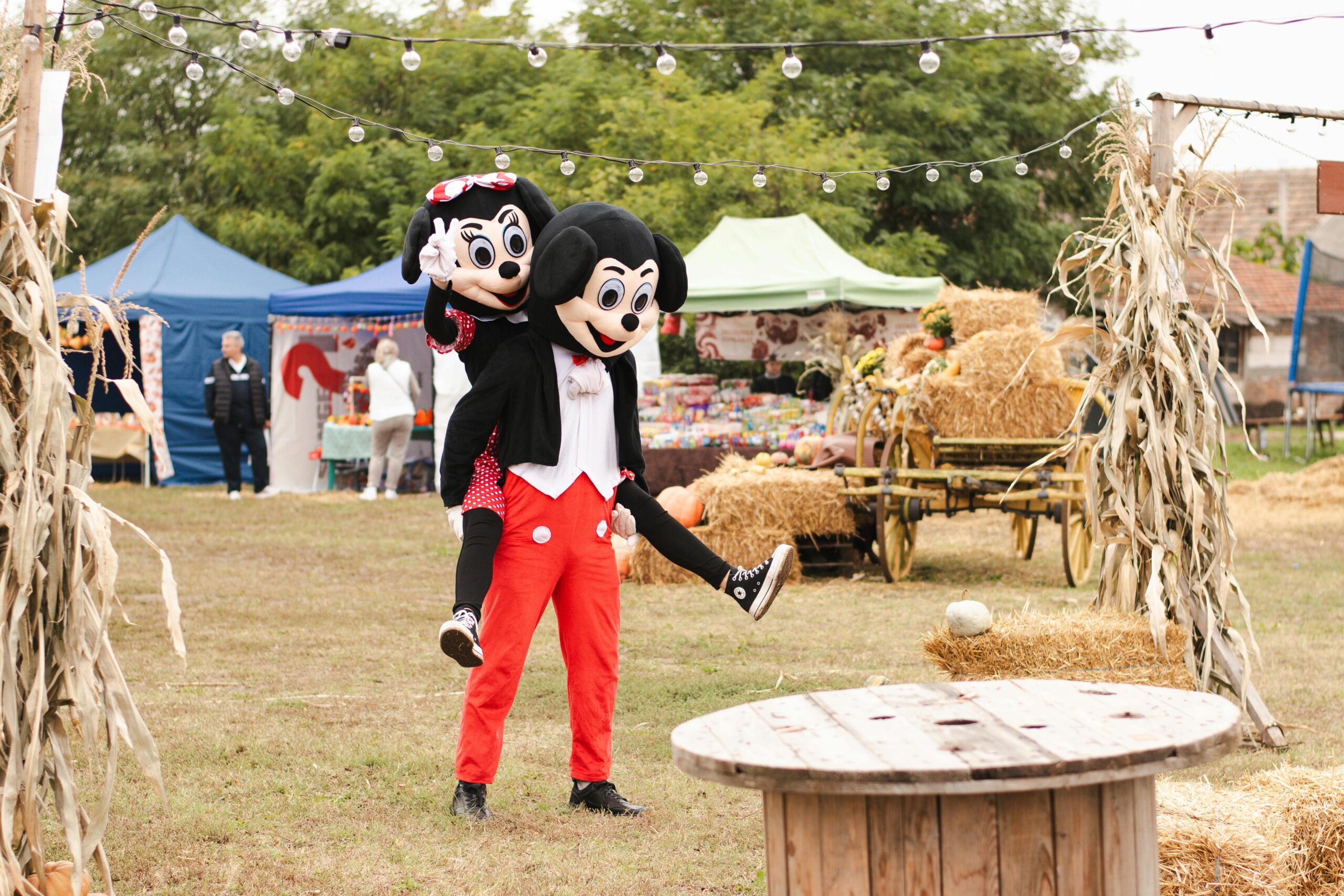
At Disney, employees aren’t just staff, they’re cast members, and when they’re “on stage” (anywhere a guest can see them), they’re expected to stay entirely in character no matter what. That means if you’re portraying Alice, you greet guests with curious questions and a British accent, even if someone is screaming, sweating, or asking why you’re not at school. Characters are trained to field all kinds of bizarre questions: “Do you have a boyfriend?” “Do you know Spider-Man?” “Can I see your feet?” (Yes, that one’s real.) The rule is simple: never drop the voice, never step out of persona, and never say anything that acknowledges you’re an actor in a costume. The illusion must stay intact at all times, no matter how awkward or downright strange the interaction becomes.
This rule extends to emergencies, heat exhaustion, even bodily fluids. If a character faints from the heat (which happens more often than you’d think), other cast members form a human wall to shield them from view so guests never see the costume removed. There are backup characters stationed throughout the park, ready to seamlessly “swap in” if someone breaks character or needs to exit quickly. Even during intense situations like ride evacuations or lost children employees are trained to stay calm, in role, and ideally in story. A pirate might say, “Aye, seems the ship’s takin’ a brief rest!” rather than admit the ride’s broken. The physical and mental demands are huge. But Disney believes the emotional payoff is bigger. For the child who just high-fived Goofy or asked Elsa about her castle, that moment is real. And breaking character doesn’t just ruin a scene it breaks the spell. Source: Fodor’s Travel Guide
3. Facial Hair Is (Finally) Allowed—but Only If It’s Fairy-Tale Friendly
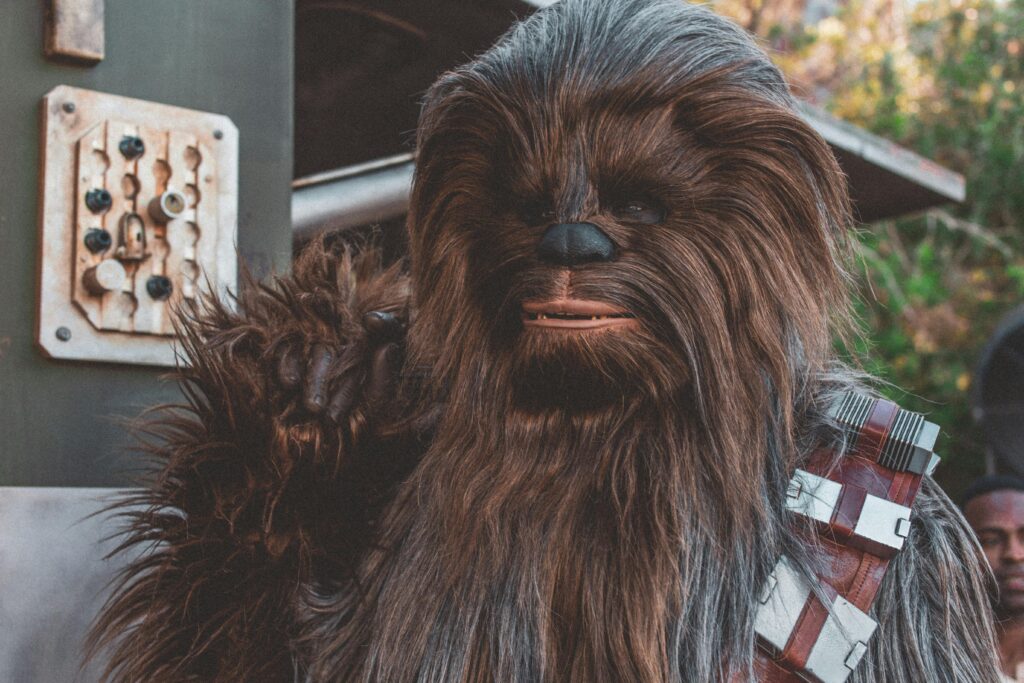
For decades, Disney had a strict no-facial-hair policy for male cast members, regardless of role. Mustaches, beards, sideburns, none of it was allowed, not even a little stubble. Ironically, Walt Disney himself wore a mustache, but that didn’t change the policy. The rule was part of Disney’s vision of clean-cut, storybook-perfect cast members who blended into their characters without modern distractions. The idea was that guests should never see a Space Ranger with a soul patch or a Main Street clerk with a lumberjack beard; it would break the illusion of timeless fantasy. This rule remained in place until 2000, when mustaches were finally permitted, and it wasn’t until 2012 that short, neatly groomed beards were allowed, too.
However, even now, grooming standards remain strict. Facial hair must be “natural-looking,” short, evenly trimmed, and not styled in any way that could appear trendy or draw attention. That means no long goatees, no elaborate curls, and no ironic mustaches or villainous chin straps. Cast members can’t even have a five o’clock shadow if it’s there; it better be intentional and uniform. This all falls under “The Disney Look,” an internal set of appearance standards that dictate everything from nail polish colors to earring sizes. The goal? Total immersion. No visual element should yank guests out of the story, not even a rogue whisker. So while facial hair is technically allowed, it’s tightly curated. If it wouldn’t look at home in a fairy tale, it won’t make the cut at Cinderella’s Castle. Source: NPR
4. Code Words Are Used to Keep the Magic (and Chaos) Quiet
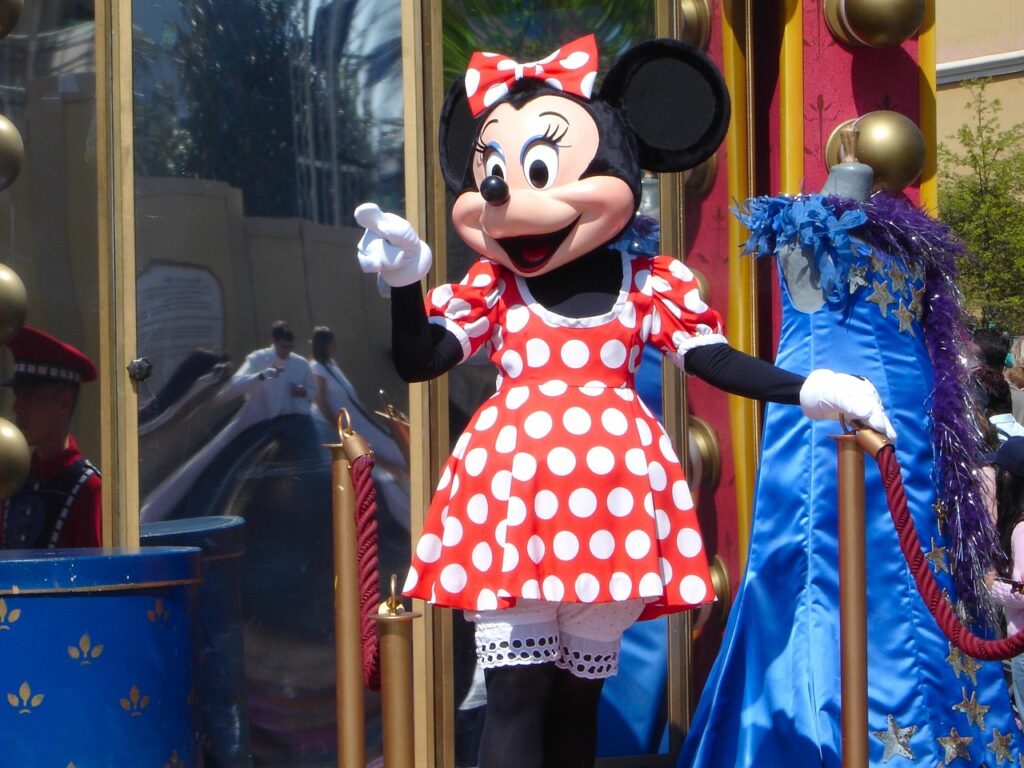
At Disney parks, employees don’t just deal with accidents; they translate them into a secret language. If someone vomits on the Mad Tea Party ride, it’s a “Code V.” If a child pees in the queue for Pirates of the Caribbean (which happens more than anyone wants to admit), it’s logged as a “Code U” or a “protein spill.” Lost a parent? “Code Adam.” Guest gets too rowdy? That’s a “Code H” for hostile. These euphemisms serve one mission: to protect the illusion. Because no matter what’s happening backstage, the park has to feel calm, clean, and charmed for everyone else.
It gets weirder. Ride malfunctions are referred to as “Code 101,” while “Code 102” means it’s backup. Suspicious powder on a bench? “White powder alert.” And if someone scatters ashes, usually of a deceased loved one, on a ride like Haunted Mansion (yes, this happens), cast members radio in a “HEPA cleanup.” The idea of Mickey cheerfully waving while a hazmat team quietly mops up grandma’s remains in Doom Buggy #3 is… bizarrely on brand. Every cast member is trained to use these codes with ease, never breaking character or alerting guests. The fantasy must go on even when it smells like churros and bleach. Source: Reader’s Digest
5. Characters Can’t Say “I Don’t Know”—Even If They Absolutely Don’t
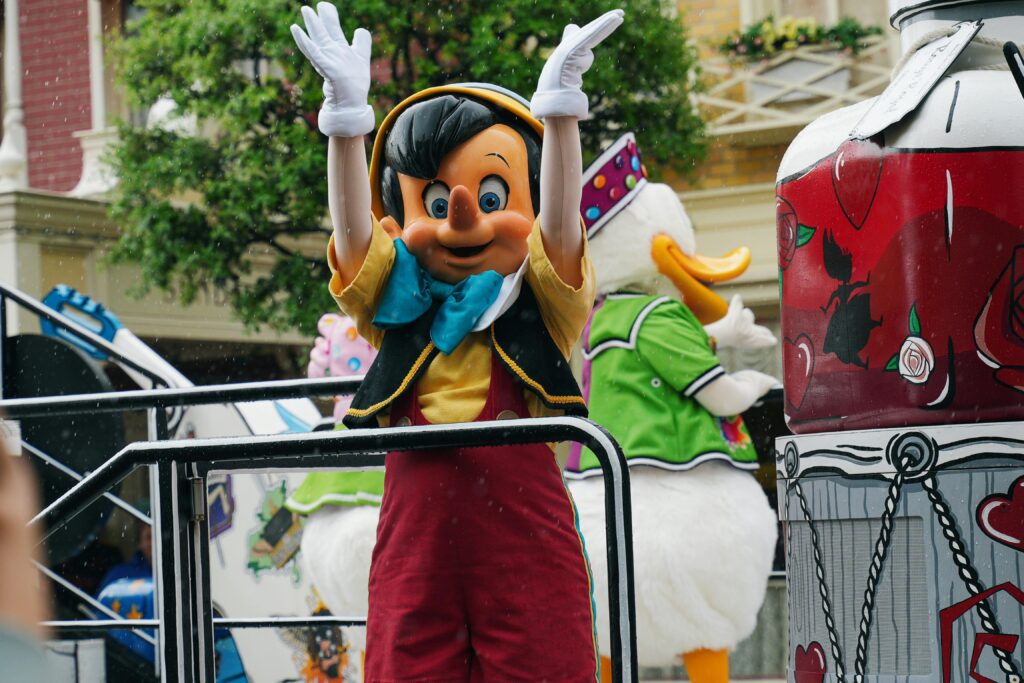
If a guest asks you how many bricks are in Cinderella’s Castle, you don’t get to say, “I’m not sure.” You find a story. At Disney, cast members are strictly trained never to say “I don’t know” because admitting uncertainty shatters the illusion that the Magic Kingdom is a perfectly orchestrated fantasy. Even a popcorn vendor is expected to offer a helpful (and cheerful) response to a baffling question. Instead of shrugging, they’ll say things like, “That’s a great question! Let me ask one of my friends who might know,” or “I’m going to find out for you right now.” The response is less about accuracy than maintaining the fantasy that all cast members are connected by an invisible, all-knowing magic hotline. Guests don’t get a confused employee; they get an enchanted problem-solver on a quest.
The rule is even stricter for costumed characters and “face characters” like Belle or Aladdin, who are required to stay in persona while answering questions that range from adorable to downright unhinged. Cast members have reported being asked, “Is Elsa married to Jack Frost?” or “Does Peter Pan have a TikTok?” and must come up with lore-consistent replies in real time. The goal isn’t to provide factual answers; it’s to keep the magic believable for guests, especially kids. If Ariel doesn’t know what Wi-Fi is, she’ll say something about mysterious sea signals. If Woody is asked what year Toy Story was released, he might answer, “The year Andy got me!” It’s exhausting mental gymnastics, but it keeps the magic alive. Because at Disney, “I don’t know” isn’t just discouraged. It’s forbidden. Source: Disney Examiner
6. Even Undergarments Are Regulated (Yes, Really)
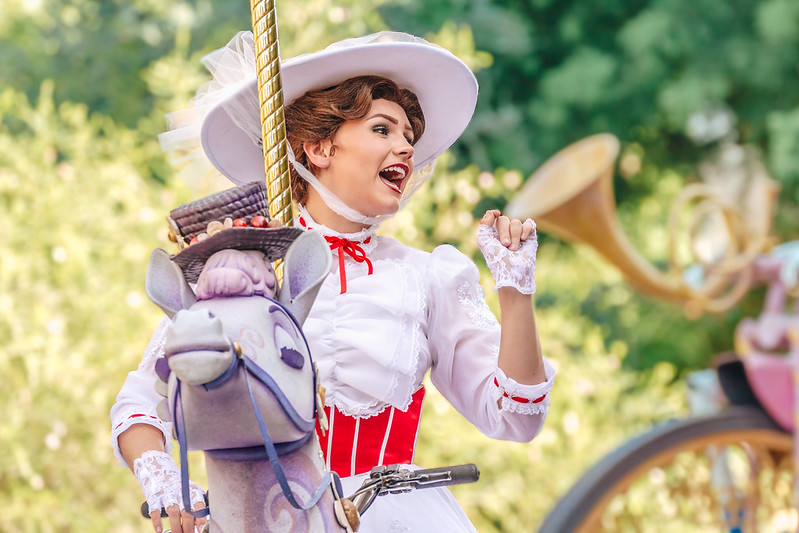
At Disney, the costume doesn’t start with the dress or the gloves; it begins with what’s under them. For years, performers in shared character suits were required to wear Disney-issued undergarments, including padded shorts and moisture-wicking shirts. These were collected, washed, and reissued by Disney’s central laundry services. However, by the early 2000s, the system began to unravel. Employees began reporting stained and visibly dirty undergarments being handed out, sometimes still damp or covered in someone else’s hair. The backlash grew loud enough to involve OSHA, and Disney quietly revised its policy, allowing cast members to wear their own clean layers, albeit with specific rules in place.
Today, even privately sourced undergarments are regulated. The “Disney Look” extends to everything: socks must match, underlayers must be invisible, and nothing can peek through or interrupt the silhouette of a costume. A wrinkle under a princess gown or a visible strap on Buzz Lightyear breaks the illusion, and breaking the illusion at Disney is almost worse than breaking the law. Because even when you’re sweating buckets inside a fur suit, you’re still expected to look storybook-perfect. In the Magic Kingdom, the fantasy doesn’t stop at the costume line; it goes all the way down to your briefs. Source: LA Times
7. Every Cast Member Gets Fingerprinted—Even for the Teacups
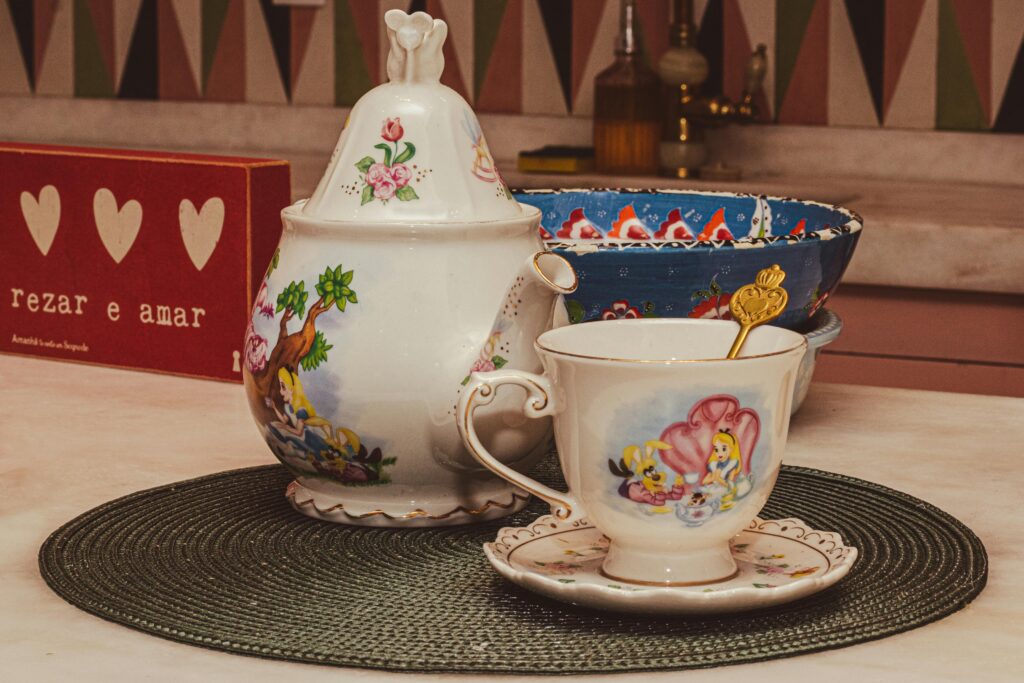
Before you can hand out churros, wear a princess gown, or operate Dumbo the Flying Elephant, Disney takes your fingerprints. All cast members, including part-timers and seasonal hires, undergo biometric background checks. While many companies conduct background screenings, Disney’s process is unusually comprehensive and deeply rooted in its commitment to safety and brand control. It’s not just about criminal history, it’s about trust. If you’re going to be hugging children, navigating emergency exits, or wearing a $10,000 costume, Disney wants to know precisely who you are.
What makes it more surreal is the setting. New hires are typically fingerprinted at Disney University, a cheerful, cartoon-accented facility where costuming mannequins and safety posters feature smiling characters. One minute you’re watching a video about “spreading pixie dust,” and the next, you’re pressing your fingertips onto a scanner like you’re entering a government facility. It’s all part of Disney’s paradox: soft edges, complex rules. Even the spinning teacups come with a background check. Source: Inside the Magic
8. There’s a Ban on Visible Tan Lines and Piercings—Because Fantasy Has a Dress Code

Disney doesn’t just costume its cast members, it curates them. One of the stranger requirements buried in the company’s appearance guidelines is a ban on visible tan lines. Whether you’re a Jungle Cruise skipper or a Main Street performer, exposed tan lines that clash with your costume can get you pulled from your shift. Why? Because tan lines are a modern visual that doesn’t belong in the timeless fantasy Disney works so hard to maintain. If you’re playing Mary Poppins, you shouldn’t have tank top stripes baked into your shoulders. Cast members are warned in advance to apply sunscreen carefully, avoid uneven tanning, and sometimes even wear makeup to blend out the lines.
The same obsessive control applies to piercings and tattoos. For decades, any visible body art or multiple ear piercings were strictly prohibited. Only recently, in 2021, did Disney revise the policy to allow small, non-distracting tattoos and a limited number of piercings, but only if they’re subtle, tasteful, and match “The Disney Look.” That means no nose rings, gauges, or bold body ink, especially on the face or neck. Even earrings must be modest in size and style, often dictated by role. A Haunted Mansion attendant can’t be rocking cartilage hoops; a fairy godmother shouldn’t flash a belly button ring. Why all the fuss? Because in Disney’s world, every cast member is a living part of the scenery. A mismatched accessory or tattoo is like spotting a modern billboard in the middle of a storybook village, it pulls the guest right out of the magic. Source: Orlando Weekly
9. Characters Must Learn to “Autograph” with the Same Signature—Perfectly

When you meet Belle, Mickey, or Donald Duck at a Disney park, the autograph you receive isn’t just a scribble; it’s a carefully choreographed piece of brand continuity. Every “face character” (those who speak and interact in costume) must learn to replicate their character’s official signature exactly, down to the size of the loops and the slant of the letters. This rule applies across all parks, so if you meet Rapunzel in Florida or France, her handwriting will be identical. It’s part of the illusion that there is only one Rapunzel in the Disney universe, not dozens of performers rotating through wigs and tiaras behind the scenes. It may look effortless, but cast members report having to practice the signature hundreds of times under the watchful eye of character trainers before they’re allowed to sign in front of guests.
It’s not just handwriting, it’s performance. Tiana must sign with elegance. Goofy bounces with each letter. Even Mickey’s signature must have a confident flair that matches his cheerful personality. To make it even more challenging, performers must sign while staying in character. That means no taking off gloves, no adjusting posture, and no looking down for too long. They must embody the character while writing legibly and consistently, often while interacting with an excited or tearful child. The pressure is real: a sloppy autograph could result in retraining or even reassignment. Because at Disney, even the smallest curve of a “y” or a missed swirl on a heart over an “i” can be considered a break in the magic. It’s not a job, it’s calligraphy with consequences. Source: Plan Disney
10. No Cast Member Is Ever More Than 30 Steps from a Trash Can (and They Can’t Be Caught Throwing Trash Away)
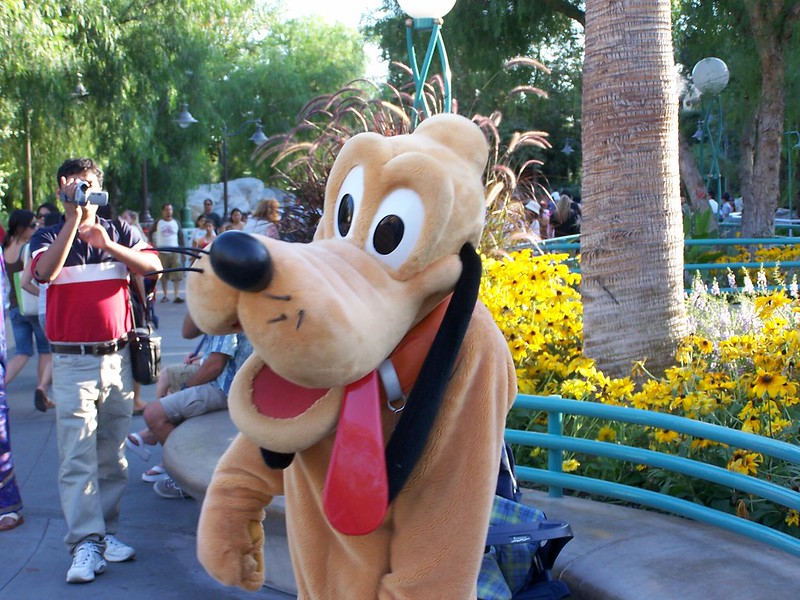
Walt Disney was famously obsessed with cleanliness, and that obsession lives on in one of the strangest park planning rules of all: no guest should ever be more than 30 steps from a trash can. This wasn’t just a random number. Walt reportedly counted how long people would carry trash before dropping it on the ground. The answer? About 25 to 30 steps. So when Disneyland was designed, trash cans were placed with near-surgical precision. It’s one reason the parks feel so remarkably clean, even when they’re packed with thousands of guests devouring turkey legs and churros. And that’s only half the story.
Behind the scenes, Disney has created a near-invisible waste removal system that feels more sci-fi than sanitary. At Magic Kingdom, an underground vacuum-powered system called AVAC (Automated Vacuum Collection) sucks trash through miles of tunnels at up to 60 miles per hour, like a magical garbage highway running beneath your feet. Meanwhile, above ground, custodial cast members are trained in something called the “Disney Scoop,” a choreographed motion where they collect litter without breaking stride or drawing attention. They also aren’t supposed to look like they’re cleaning. There’s no slouching, no muttering, no snapping open a trash bag. Even trash removal is part of the show. It’s a strange blend of stagecraft and sanitation: garbage must vanish without disrupting the magic. So while you may never see it happen, rest assured, somewhere just out of view, a carefully trained cast member is scooping up popcorn kernels like it’s part of a Broadway number. Source: Top Villas
11. Some Characters “Don’t Speak” Because They Can’t Speak Every Language
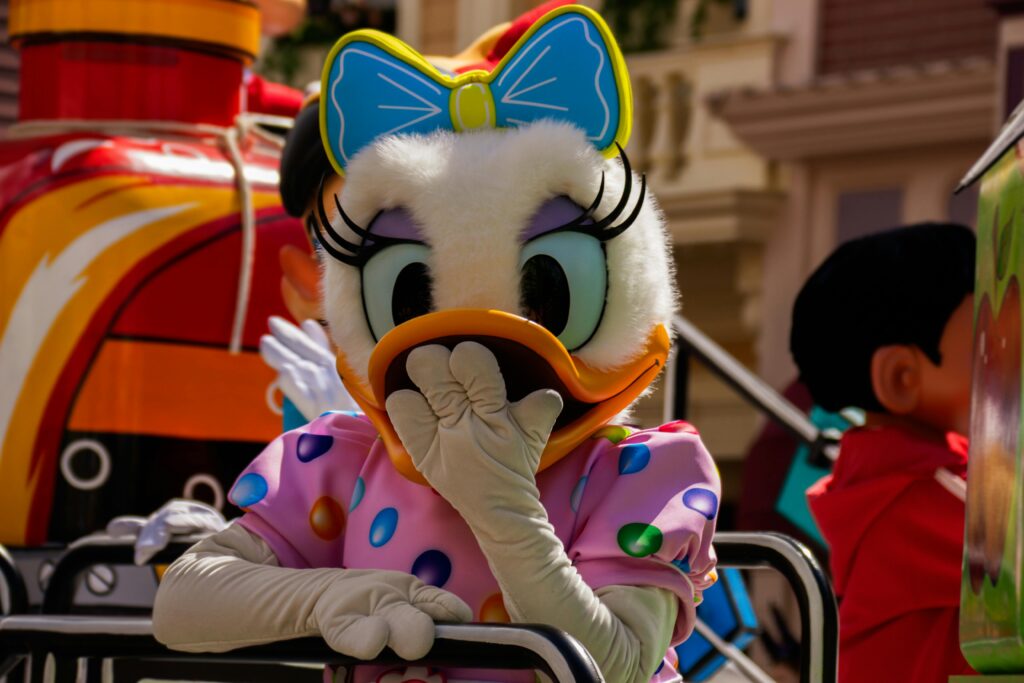
If you’ve ever met Mickey Mouse in person and wondered why he’s suddenly mute, you’ve discovered one of Disney’s stranger global policies. Many of the most iconic “fur characters”—Mickey, Minnie, Donald, Goofy—are deliberately nonverbal when interacting with guests in the parks, regardless of what they sound like in films or TV shows. It’s not because they can’t talk; it’s because Disney has chosen to keep them silent to maintain global consistency. A talking Mickey might speak English in Orlando, but what about in Tokyo, Paris, or Hong Kong? Rather than train dozens of multilingual voice actors to perform perfectly synced dialogue in character, Disney made the bold decision to have those characters communicate solely through pantomime and exaggerated gestures. It’s a workaround that protects the illusion—and prevents some awkward international slipups.
There’s another reason they stay quiet: the costumes themselves. Many of the larger “fur suits” restrict vision, airflow, and mobility, and are often equipped with fans or cooling vests to prevent heat exhaustion. Adding audio equipment or encouraging speech would not only be logistically complex—it could be unsafe. And yet, the result is often beautiful. Guests remember the warm hug from Winnie the Pooh or the playful gestures from Pluto long after they forget words. These nonverbal interactions are choreographed to feel universal—friendly, silly, and full of exaggerated emotion—so no translation is ever needed. Still, it can feel a little surreal to see Mickey dancing and waving but never speaking a word, especially when you grew up hearing him talk. But that’s part of the Disney paradox: silence can be more magical than sound, especially when everyone, everywhere, gets the same enchanted version of the story. Source: Touring Plans
12. You Can’t Use Your Real Name If Someone Else Already Has It
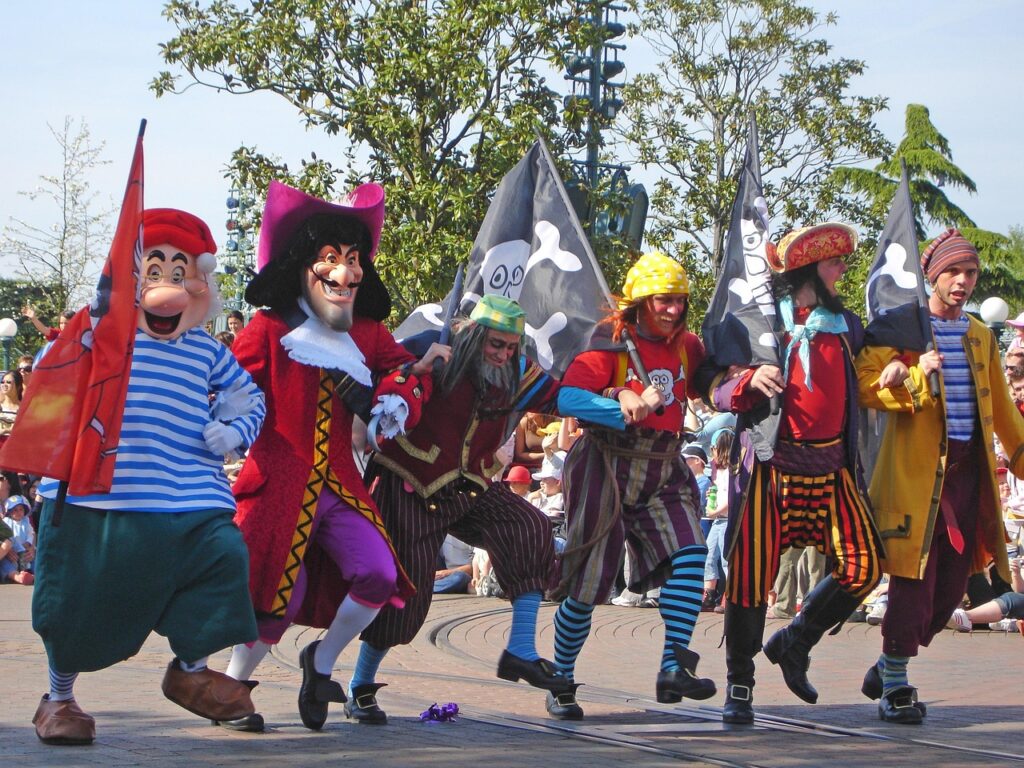
When you start working at a Disney park, your name tag is a big deal—it’s part of your costume, your identity, and your role in the show. But here’s the catch: if someone else on property already has your first name, you have to change yours. That’s right—Disney doesn’t allow duplicate names for cast members, no matter how common. If there’s already a “Jessica” working in Epcot, the next Jessica might have to go by her middle name, a nickname, or a completely different moniker. It’s a practical rule masked in whimsy. The company says it helps prevent confusion during scheduling, emergency procedures, and interdepartmental communication. But on a deeper level, it’s part of the park’s desire to create a seamless experience—where everyone has a role, and no two roles are exactly the same.
The result is equal parts funny and frustrating. Some cast members end up going by versions of their names they’ve never used before in their lives—“Liza,” “R.J.,” or even “Kat 2.” In more extreme cases, people have joked about feeling like they’re in witness protection while on shift. But the rule also reinforces how Disney views its employees—not as interchangeable workers, but as individual pieces of a performance. Everyone has their own “stage name,” even if it was chosen out of necessity. Once your shift ends, you can be yourself again. But while you’re wearing the badge, you’re not just an employee—you’re a character in the greatest show on Earth. And that character’s name? It’s already taken.
13. The Word “No” Is Basically Banned
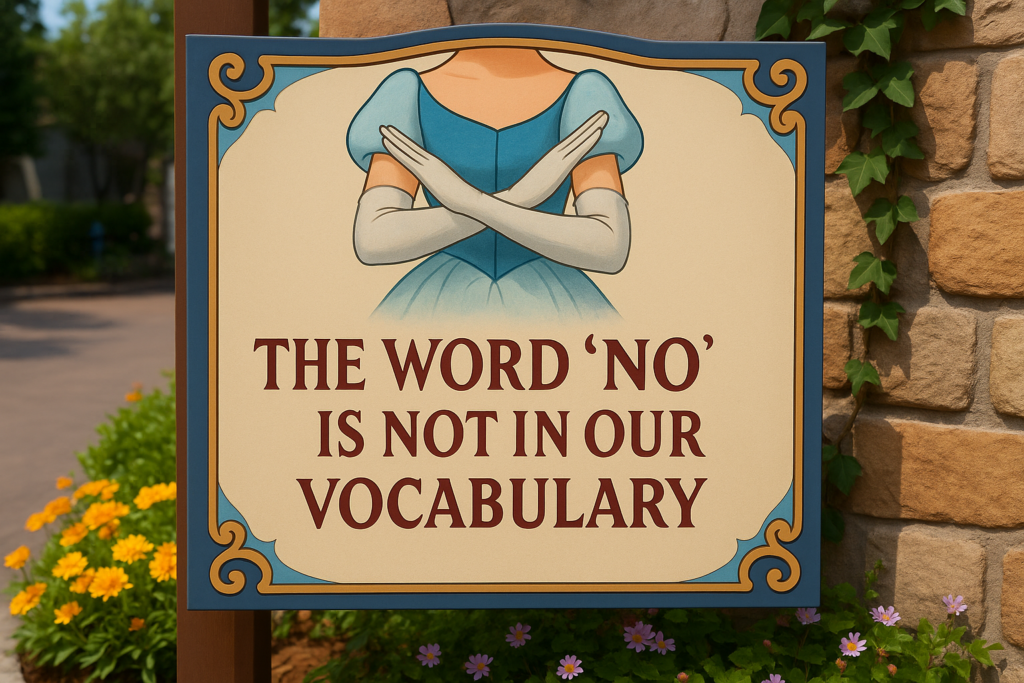
At Disney, you’ll rarely hear the word “no,” even when the answer is a definite, resounding no. That’s not an accident. Cast members are trained to avoid using the word altogether, especially with kids, because it shatters the illusion that anything is possible at the Happiest Place on Earth. Instead, employees learn a carefully curated set of phrases designed to soften the blow without sounding negative. For example, if a child asks to meet a character who isn’t available, a cast member might respond with, “They’re off getting ready for the parade,” or, “They’re out on a royal adventure right now.” The goal isn’t to lie, it’s to redirect disappointment into curiosity, while keeping the magic intact.
This verbal gymnastics isn’t limited to characters. Suppose a guest asks why they can’t ride a broken attraction or bring outside food into the park. In that case, cast members will spin it positively: “That attraction’s taking a short break, so it’ll be even better later,” or, “Let’s find something magical inside to snack on together.” Even in safety situations, like guests asking to enter a closed area, the answer is phrased as a cheerful detour. The psychological effect is real: guests feel less like they’re being denied and more like they’re being invited into an unfolding story. Still, for cast members, constantly walking the line between honesty and illusion can get exhausting. After all, sometimes “no” is just the truth, but in Disney’s world, truth always needs a little sparkle.
14. Rain? What Rain? Cast Members Must Pretend the Weather Is Fine

If you ask a Disney cast member whether it’s going to rain, they’ll likely say something like, “We’re expecting a little liquid sunshine!” That’s not just cheerfulness—it’s policy. Cast members are discouraged from negatively acknowledging bad weather. They’re trained to stay upbeat no matter how soggy or sweltering it gets. This is part of Disney’s commitment to what they call “the show.” If the Magic Kingdom is a stage, then the weather, no matter how miserable, is just another scenic element. Complaining about it breaks character, and that’s never allowed.
But behind the scenes, Disney takes weather control very seriously. Disney World has its private weather monitoring team, and radar specialists work in real time to anticipate lightning strikes, coordinate parade delays, and close water rides before a storm hits. In some areas of the park, like Epcot and Magic Kingdom, they even use specially designed drainage systems and “weather-safe” queue zones to manage sudden downpours without ruining the guest experience. Still, cast members remain chipper through all of it, even when they’re handing out ponchos and dodging puddles the size of Tomorrowland. Because in Disney’s world, the sun’s always shining… even if it’s pouring.
15. Cast Members Can Only Enter and Exit “On Stage” in Their Assigned Land

If you’re dressed like a cowboy from Frontierland, you’re not allowed to stroll into Tomorrowland casually. Disney has a strict rule that cast members must only appear “on stage” in the land to which their costume belongs. That means a Space Ranger won’t be spotted grabbing a churro near Liberty Square, and a Haunted Mansion butler can’t accidentally emerge from behind the Adventureland Dole Whip stand. Why? Because each “land” in Disney parks is treated like a fully self-contained universe with its time period, theme, and rules of reality. Seeing a Jungle Cruise skipper wandering through Star Wars: Galaxy’s Edge would completely break the illusion.
To prevent these cross-world collisions, Disney World uses a system of backstage tunnels known as the Utilidors beneath the Magic Kingdom. These underground passageways allow cast members to travel between lands without ever being seen. It’s a surreal experience: beneath the fairy tale architecture, there’s a world of fluorescent lighting, golf carts, and costumed performers grabbing coffee next to chipmunks with their heads off. But above ground, you’d never know it. Everything is orchestrated so guests only ever see each character exactly where they’re supposed to be, doing exactly what fits their setting. Even the way cast members move, how fast they walk, and whether they wave, changes depending on their assigned land. It’s obsessive. It’s immersive. It’s bizarre. And it works.
16. Disney’s Youngest Cast Members Must Be Short Enough to Play the Role
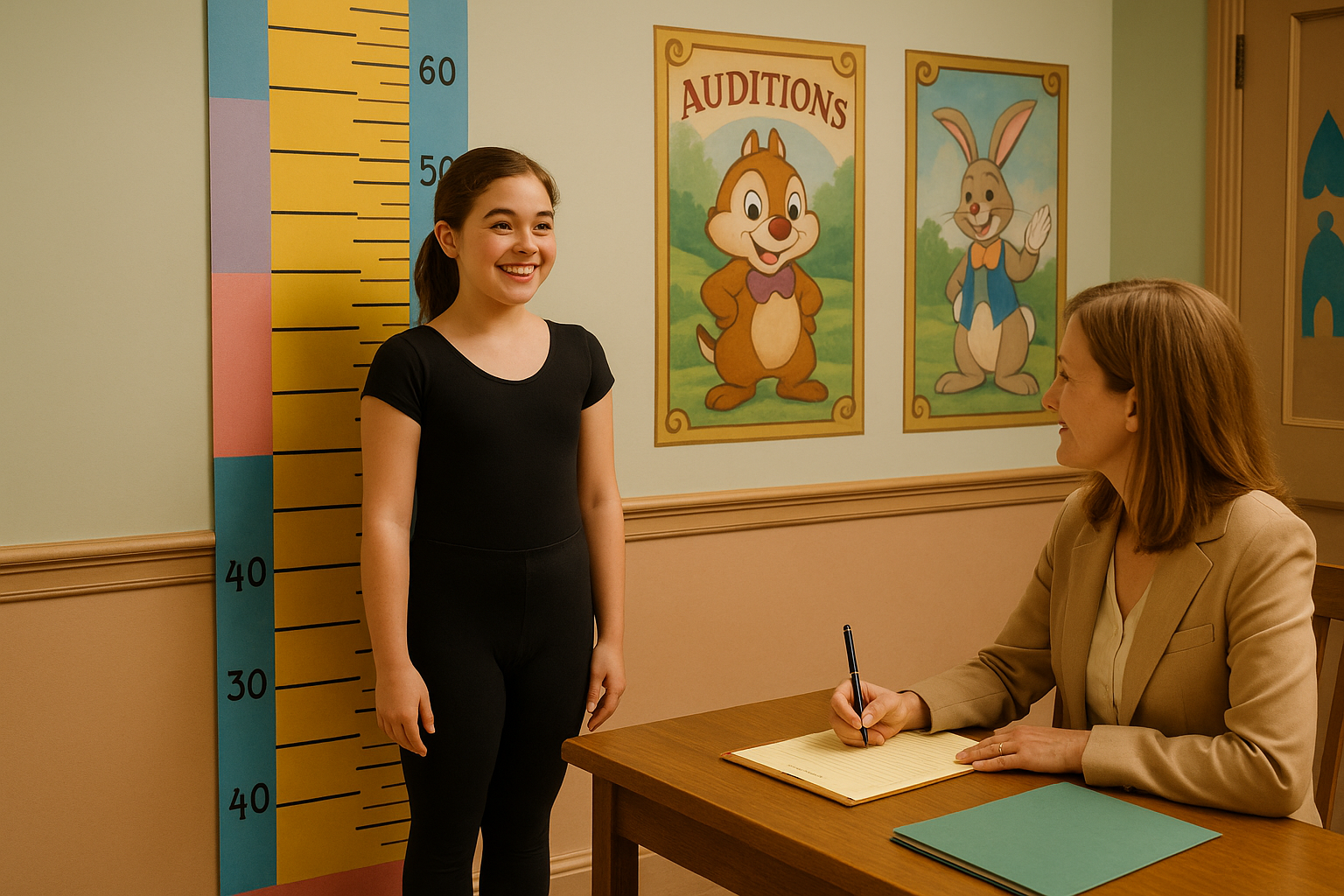
Some of Disney’s most iconic characters, like Mickey, Minnie, Chip, and Dale, are played by adult cast members who meet a particular requirement: they must be short. These roles are typically filled by performers between 4’8” and 5’2” in height, allowing the costume to look true to scale when interacting with guests, especially children. Disney doesn’t just cast based on height; they also train performers in movement, personality, and even walking pace. The height rule ensures that a Mickey Mouse in Orlando looks identical to one in Tokyo or Paris. If you’re an inch too tall, you’re not eligible for specific roles. It’s not personal. It’s precision.
The job isn’t child’s play. These suits are heavy, hot, and often harrowing to see out of, which is why most of these characters are played by trained adults, not teens or students. Recruits go through physical endurance training to handle the heat, tight visibility, and demanding character motions required for hours at a time. They’re expected to move in exaggerated, joyful ways, even when they’re sweating buckets inside fur. And of course, they must stay completely silent. No talking, no reacting, and definitely no acknowledging that they’re in a costume. It’s all part of the illusion. When a five-year-old runs up to hug Mickey, they don’t see an actor on the verge of heatstroke; they see their hero come to life. And for that to work, Disney needs more than magic. It needs measurements.
17. You Can Be Fired for Taking Off Your Head in Public

If a performer inside a Mickey Mouse suit removes their head in front of guests, even for a second, that can be grounds for immediate termination. It doesn’t matter if it’s sweltering hot, if the cast member is about to faint, or if they’re having a medical emergency. Disney’s rule is firm: the illusion must be preserved at all costs. No guest should ever see a character in a half-removed costume, and especially not with a human face exposed underneath. This isn’t just company culture it’s policy. For Disney, a disassembled Goofy or a decapitated Donald isn’t just awkward. It’s catastrophic. A single child seeing Mickey’s head off could undo years of carefully maintained belief.
To manage this risk, Disney trains performers to discreetly signal distress. If someone inside a character suit begins to feel faint, they’re taught to use nonverbal cues to alert a handler, often someone dressed as a park guide or cast assistant who will escort them offstage through a hidden route. In more serious cases, other cast members are trained to create a human wall to block guests from seeing the character’s removal or collapse. It’s a high-pressure job that combines physical endurance with precision stagecraft. But for Disney, even emergencies must be handled with grace. The show doesn’t stop. Not when someone vomits, not during thunderstorms, and definitely not when a fur-suited performer nearly blacks out. Because in the Magic Kingdom, fantasy is fragile, and no one wants to be the guest who saw Pluto lose his head.
18. Cast Members Can’t Eat, Drink, or Chew Gum in View of Guests

Even when the sun is blazing and the crowds are pressing in, cast members are not allowed to eat, drink, or chew gum while “on stage.” This rule applies to everyone, from performers in full costume to janitors in themed uniforms. Why? Because nothing kills the illusion faster than watching Mary Poppins crush a granola bar or Gaston sip from a Gatorade bottle. Disney wants its characters and cast to appear completely immersed in their story worlds. Hydration and hunger are real—but they’re handled backstage, behind carefully concealed doors and break areas that most guests never notice.
For characters in full suits, the policy is partly logistical. It’s nearly impossible to eat or drink in costume, and attempts to do so are unsafe and visually jarring. But for everyone else, the expectation is crystal clear: guests should never see a cast member chewing, chugging, or munching. Even gum is banned, as it’s considered sloppy and risks ending up under a bench. Cast members are trained to stay fully “in world” during their shift, and that includes appearing mysteriously immune to human cravings.
19. You Can’t Pull Out Your Phone—Even for a Second
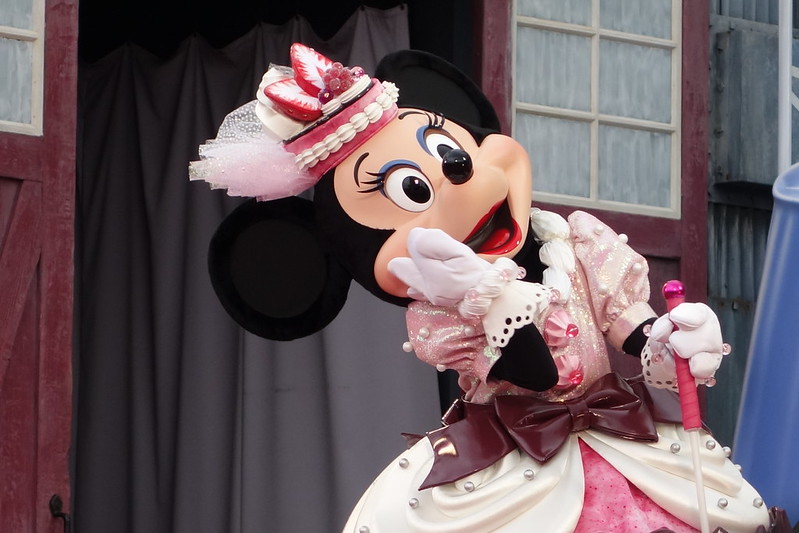
At Disney, pulling out your phone while in costume is a big no-no, whether you’re Mickey Mouse, a popcorn vendor, or a Haunted Mansion bellhop. Cast members are strictly prohibited from using personal phones in any area where a guest could see them. That includes texting, checking the time, taking selfies, or even glancing at a lock screen. The rule is rooted in immersion: nothing breaks the illusion faster than seeing a Disney princess snap a photo or a Tomorrowland cast member scrolling through Instagram. The sight of a smartphone instantly reminds guests that they’re in the real world, not a fantasy land and that’s exactly what Disney wants to avoid.
The rule applies even when there’s no crowd in sight. Cast members waiting in line for their next assignment, standing near backstage doors, or walking between attractions are expected to keep their phones out of view. And the expectation isn’t just “don’t be caught.” It’s “don’t even be tempted.” Some roles, like park photographers or coordinators, are issued Disney-owned devices for guest-facing duties. But for everyone else, phones stay in lockers, pockets, or behind the scenes. A single viral video of Elsa texting or Woody checking the weather could compromise Disney’s carefully maintained illusion. Cast members have been disciplined and even fired for violating this policy. So while guests snap thousands of photos daily, the people making the magic must pretend like smartphones don’t even exist. Because in Disney’s world, the only screen that matters is the story unfolding in front of you.
20. Every Character Learns to Move in a Specific, Scripted Way
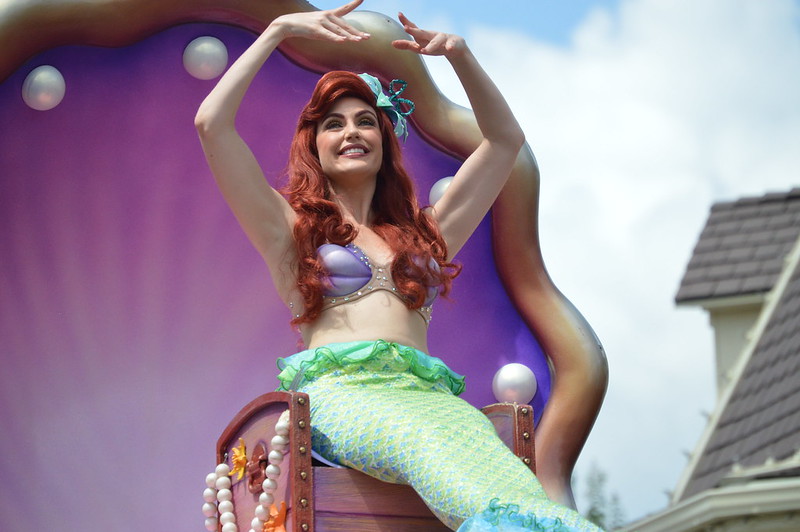
At Disney, it’s not enough to wear the costume; you have to move like the character, too. Every performer, from face characters like Jasmine to fur characters like Goofy, goes through detailed physical training to learn how their assigned role walks, waves, tilts their head, and even reacts to surprise. Belle glides with grace. Tigger bounces. Captain Hook stalks and sneers. These mannerisms aren’t just encouraged, they’re required. Disney maintains character movement manuals, training videos, and in-person coaching to ensure total consistency across all performers and park locations. That way, no matter where you meet Elsa, she always gestures with the same fluid hand swoop you’ve seen on screen.
This attention to movement extends even to small moments. Characters are taught how to hold pens while signing autographs (no clumsy grips), how to interact with children who are nervous or nonverbal, and how to move naturally without speaking a single word. The training is physically demanding, especially in full-body suits where visibility is low and the heat is intense. Yet performers are expected to hit their marks, hold their energy, and match the exact “vibe” of their character even if they’re waving for the hundredth time that hour. If you walk like a normal person instead of the Queen of Arendelle, you’ll likely be retrained. Because for Disney, it’s not enough to look like the character you have to be them from head to toe. And if that means teaching grown adults how to skip like animated woodland creatures, so be it.
21. Costumes Are Tracked—And Never Allowed to Leave the Park
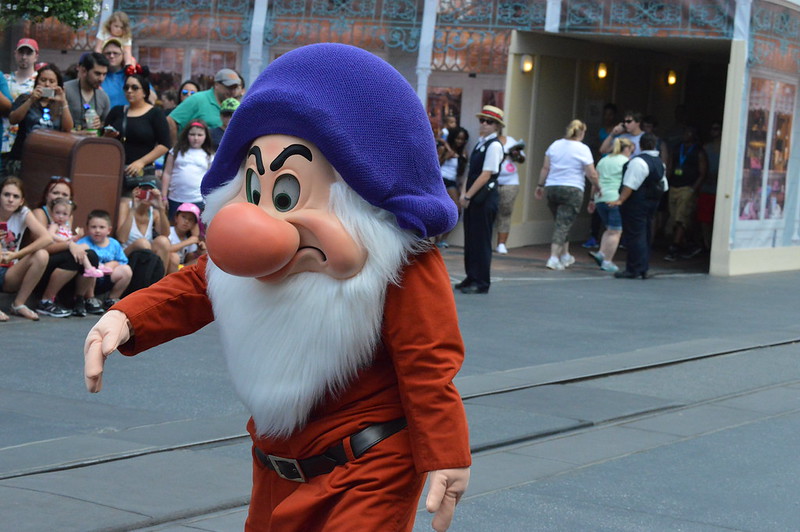
Disney doesn’t just own the magic, it inventories it. Every piece of every costume, from princess gloves to custodial polos, is tagged, barcoded, and stored in Disney’s on-site costuming departments. Cast members are not allowed to take their costumes home under any circumstances, even if it’s just a single accessory or undershirt. It’s not just about preventing loss or damage, it’s about protecting the brand. A Cinderella dress hanging in someone’s backseat or a Haunted Mansion tie showing up on social media could spoil the illusion for thousands of guests. So Disney keeps tight control, logging every item in and out like museum artifacts.
At Walt Disney World, the central costuming facility is a warehouse-sized operation, with rows upon rows of organized outfits, scanners, and RFID systems. Cast members check in daily, swipe their ID, and receive exactly what they need for their shift, sometimes even delivered through laundry chutes or automated wardrobe stations. Everything is returned and inspected for damage or wear. If a piece goes missing, it triggers paperwork. If something appears online, it may trigger a thorough investigation. This system also ensures that no costume piece ever ends up in the wrong land, imagine a Star Wars cast member accidentally wearing Tomorrowland pants. It’s not just logistics, it’s story integrity. And in Disney’s world, even laundry is part of the fantasy.
22. Even Slouching or Sitting Wrong Can Get You Reprimanded
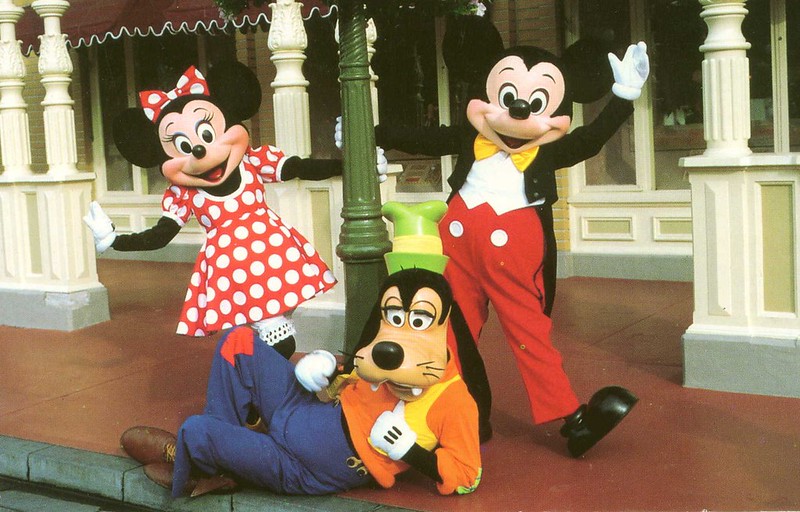
At Disney, posture isn’t just a suggestion; it’s part of the performance. Cast members are expected to maintain what the company calls a “show-ready” stance at all times while on stage. That means standing upright, making eye contact, smiling when appropriate, and never slouching, leaning, or sitting unless your role explicitly calls for it. Even casual body language can be seen as a break in character. A princess sitting on the curb or a cast member leaning against a wall disrupts the carefully maintained atmosphere of optimism and energy. You don’t just work the park, you animate it with your physical presence.
This rule applies to every department, from performers to popcorn vendors. Custodial workers are taught to sweep with precision and alertness. Food service employees must avoid crossing their arms or looking bored. Even resting backstage would need to be done discreetly. Supervisors and guest experience managers often observe cast members from a distance and take notes, offering corrections or formal warnings if someone slips into “off-duty” posture while still in costume. It might seem extreme, but it’s rooted in Disney’s obsession with seamless immersion. The goal is to make every guest feel like they’ve stepped into a living storybook, not just an amusement park. And in that storybook, no one is slouching, because even gravity is part of the script.
Final Take: Where Fantasy Has Rules and Reality Waits Backstage
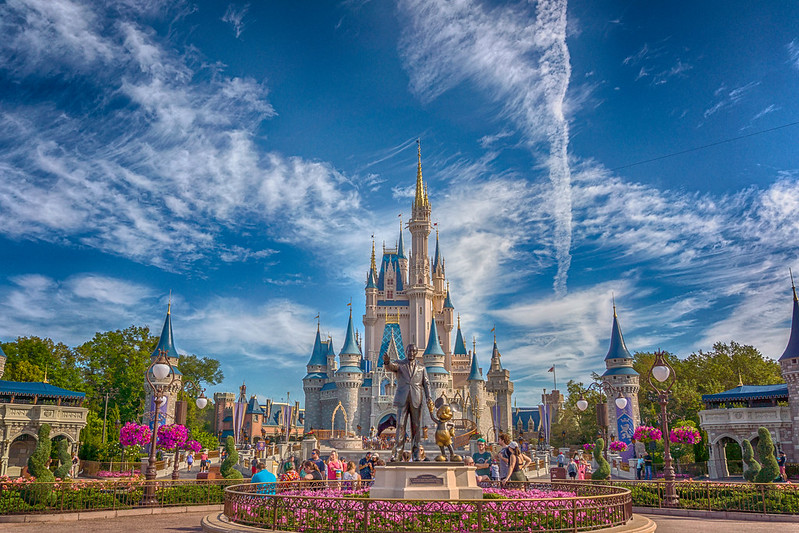
Disney parks may look effortless, but the magic is anything but accidental. Behind every smiling character, spotless walkway, and perfectly timed interaction is a system of rules so detailed it borders on theatrical obsession. Cast members follow strict guidelines not just about how they dress, but how they move, speak, sit, and even breathe inside 20-pound suits. From choreographed trash collection to banned phone use, every rule exists to protect the illusion that guests aren’t in a theme park, they’re in a living world where Mickey never sweats, princesses never slouch, and nobody has ever once said “I don’t know.”
The 22 rules you just read aren’t random; they’re a blueprint for immersion. They may seem extreme, but they work. For millions of visitors each year, Disney doesn’t just sell rides or food, it sells belief. To keep that belief alive, the company enforces one of the strangest and most surreal employee handbooks in the world. Because at Disney, magic isn’t improvised, it’s implemented, rehearsed, and strictly regulated. And that might be the most magical thing of all.
The story 22 Bizarre But True Rules Disney Enforces on Its Park Employees was originally published on DailyFetch.


